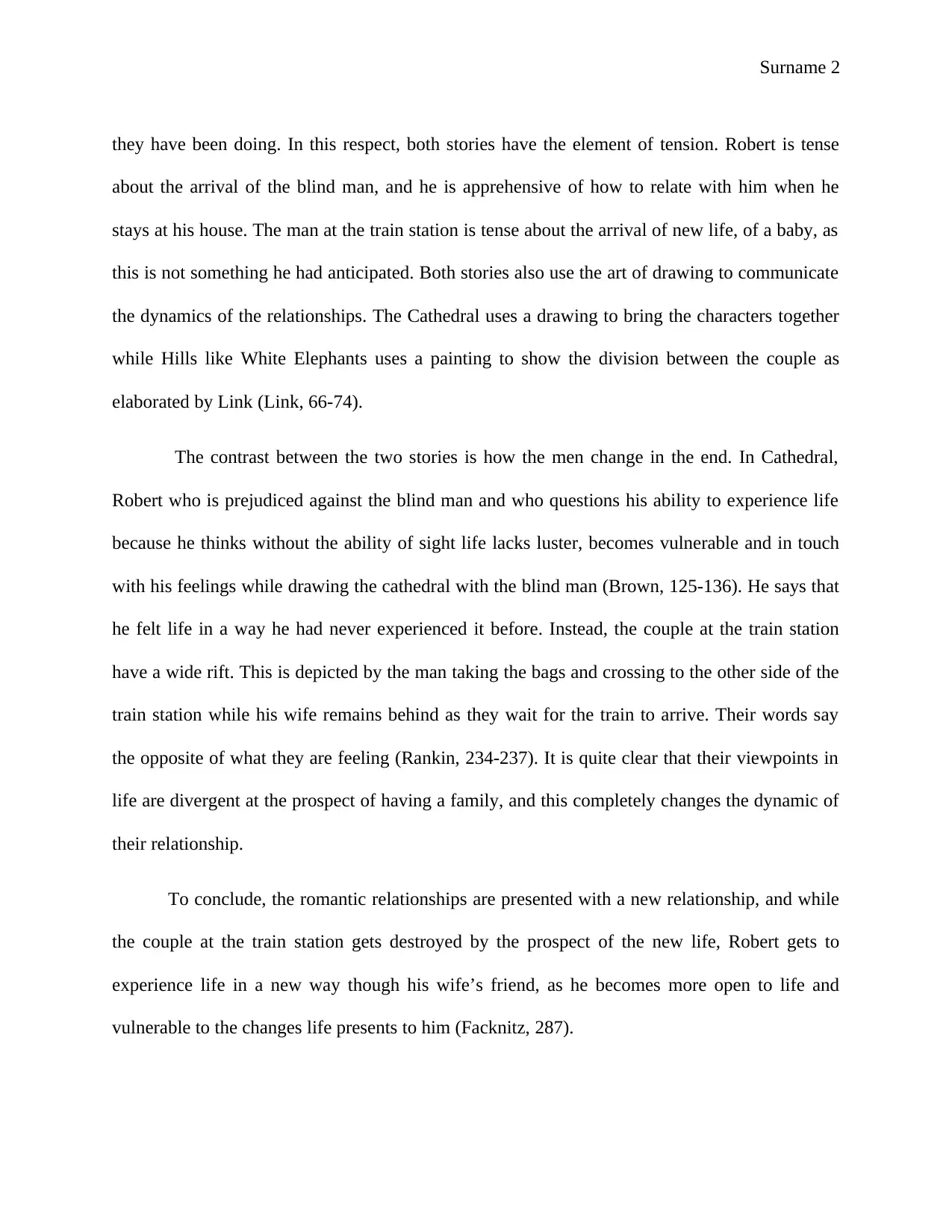Analyzing Relationships: A Comparison of Two Short Stories
VerifiedAdded on 2023/04/21
|3
|863
|67
Essay
AI Summary
This essay provides a comparative analysis of the romantic relationships depicted in Ernest Hemingway's 'Hills Like White Elephants' and Raymond Carver's 'Cathedral.' The analysis highlights that both stories present relationships facing critical junctures, with contrasting outcomes. In 'Hills Like White Elephants,' a couple grapples with a decision about pregnancy, revealing divergent desires and a growing rift. Conversely, 'Cathedral' portrays a husband's transformation from prejudice to empathy through his interaction with a blind man, fostering a newfound connection. While the couple in 'Hills Like White Elephants' experiences division, the protagonist in 'Cathedral' achieves personal growth and deeper understanding. The essay concludes that the stories offer contrasting perspectives on how relationships evolve when confronted with significant life events, with one leading to dissolution and the other to unexpected connection.
1 out of 3










![[object Object]](/_next/static/media/star-bottom.7253800d.svg)